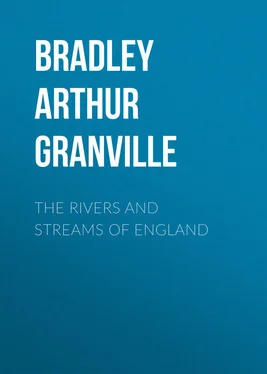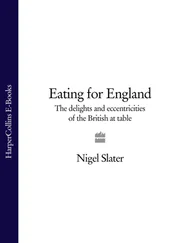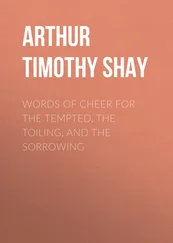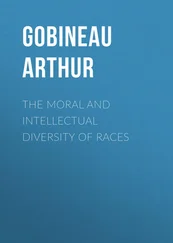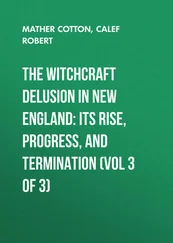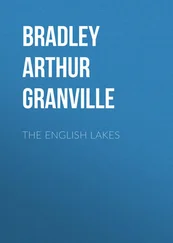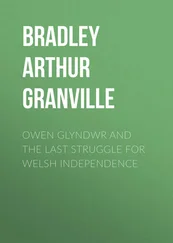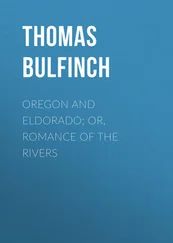Arthur Bradley - The Rivers and Streams of England
Здесь есть возможность читать онлайн «Arthur Bradley - The Rivers and Streams of England» — ознакомительный отрывок электронной книги совершенно бесплатно, а после прочтения отрывка купить полную версию. В некоторых случаях можно слушать аудио, скачать через торрент в формате fb2 и присутствует краткое содержание. Жанр: foreign_language, foreign_antique, foreign_prose, Путешествия и география, на английском языке. Описание произведения, (предисловие) а так же отзывы посетителей доступны на портале библиотеки ЛибКат.
- Название:The Rivers and Streams of England
- Автор:
- Жанр:
- Год:неизвестен
- ISBN:нет данных
- Рейтинг книги:3 / 5. Голосов: 1
-
Избранное:Добавить в избранное
- Отзывы:
-
Ваша оценка:
- 60
- 1
- 2
- 3
- 4
- 5
The Rivers and Streams of England: краткое содержание, описание и аннотация
Предлагаем к чтению аннотацию, описание, краткое содержание или предисловие (зависит от того, что написал сам автор книги «The Rivers and Streams of England»). Если вы не нашли необходимую информацию о книге — напишите в комментариях, мы постараемся отыскать её.
The Rivers and Streams of England — читать онлайн ознакомительный отрывок
Ниже представлен текст книги, разбитый по страницам. Система сохранения места последней прочитанной страницы, позволяет с удобством читать онлайн бесплатно книгу «The Rivers and Streams of England», без необходимости каждый раз заново искать на чём Вы остановились. Поставьте закладку, и сможете в любой момент перейти на страницу, на которой закончили чтение.
Интервал:
Закладка:
Rising at the head of the outermost eastern gorge of the Black Mountains, the Monnow runs a course from its source to its mouth of unremitting loveliness. Met at the base of the mountains by the Honddu, coming fresh from the sacred pastures of mountain-girdled Llanthony, the united streams are still further reinforced at Pontrilas by the waters of the Golden Valley. Thence, running under the high-poised ruinous Castle of Grosmont, through the chase of Kentchurch Court, where another daughter of Glyndwr lived and her descendants live to-day, and onward yet down a deep, narrow vale overhung by hills over a thousand feet in height, washing the ivy-clad ruins of Skenfrith Castle, the beautiful stream slacks something for the last half-dozen miles of its pilgrimage to Monmouth. For the number and average weight of its fish the Monnow is perhaps the best trouting stream on the whole Welsh Borderland, which is saying a good deal, though the introduction of grayling has not been favourable to its maintaining its former high standard. It has given its name at any rate to a town, a county, and a king. A great king too was Harry of Monmouth, of whose birthplace, the Castle, there is not a great deal left, beyond the very perfect gateway on the Monnow Bridge. Regarding the county whose boundary against Herefordshire the Monnow forms for the greater part of its career, this was named, of course, from the town when Henry the Eighth created it out of many lordships. It would be ill forgetting, however, Geoffrey of Monmouth, whose “study,” by a pious fiction, is pointed out to the stranger in a fragment still remaining of a twelfth-century Benedictine Priory. Whether Geoffrey as a historian was over-credulous or a bit of a wag does not matter. The later poets and their readers are much indebted to him for the Arthurian legend. If Arthur did not hold his Court at Monmouth, he held it at Caerleon, in the next valley, and the glorious Usk, child of the Black Mountains, and almost the Wye’s equal in its upper reaches, is nowhere an English river – happily for our space. With the memory of many a ramble by the Teme and Lugg, the Monnow and the Honddu, it goes hard enough to pass them by, but the passing of the Usk in such light fashion would be harder still. As for Monmouth itself, there is nothing else remarkable about it, nor yet, fortunately, is there anything calculated to disturb the peaceful and romantic nature of its setting.
For the ten succeeding miles to Tintern Abbey the Wye valley is only less delectable of aspect than above Monmouth, while below Tintern, retaining almost to the last some of the stir of a salmon river in its maturer stages, it has all the charm of a broad one, flowing in a narrow valley between hills at once lofty in altitude and opulent in detail. For a time, however, below Monmouth the river flows in what approaches to a gorge with heavily wooded sides. At Redbrook, too, where a stream comes in, there is just a smirch of industrial life from the Forest of Dean. But this quickly passes, and the vale again opens. The lush wandering hedgerows again climb the steeps; the little white houses blink through orchards upon high-pitched terraces. Here still are the rich red patches of tillage, the woodland drapery, the country-seats, conscious no doubt that they have an atmosphere to live up to. All these are grouped with an effect peculiar to the Wye, for the simple reason that no other English river valley combines the luxuriance of a soft and forcing climate with a physical environment so consistently distinguished in scale and altitude as does the Wye for the 30 odd miles between Ross and Chepstow. There are interludes, of course, where both lofty sides of the vale are clad with an unbroken mantle of wood, and it is this variety of decoration that is so alluring. What is left of the great Cistercian Abbey Church of Tintern stands in a somewhat ampler opening in the vale, just wide enough to spread a generous carpet of meadow, as it were, on which to lay so beautiful a fabric.
Tintern has been so celebrated in prose and
verse and by the artist’s brush, it would seem almost futile to deal in paragraphs with this glorious specimen of the Decorated period, raised by the great Border House of Clare for the Cistercian Order, whose genius for selecting a site seems to have been in no way inferior to the lavish splendour of their architectural conceptions. Just beyond Tintern this wonderful valley makes its greatest and almost its final effort. Whether the Wyndcliff or Symond’s Yat be its greater achievement matters nothing. The latter, of course, combines its scenic splendours with extraordinary physical conditions. The Wyndcliff is simply a most superb wall of woodland and outstanding limestone crag upon a large scale, which from its summit displays a noble prospect of the final passage of the Wye out on to the Severn levels; a glittering, sinuous trail through a fold of precipitous wood-clad hills opening on to shining flats and infinite distances beyond. Fortunate is the wight who is privileged to enjoy the Wyndcliff on some still, sunny morning when that stupendous curtain of foliage is fully lit by the fires of autumn, into a blaze of gold and russet, broken here and there by columnar limestone crags, and those sombre patches of yew that upon all the cliffs of the Wye seem purposely introduced to set off the contrasting brilliance of the autumnal foliage.
But the glories of the Wyndcliff in only a modified form extend the whole way upon one bank or the other to Chepstow, and here on the very verge of a low precipitous cliff, washed by the Wye, are the still considerable ruins of the great Castle of Chepstow or Striguil; and a more appropriate and significant ornament to what is practically the mouth of the river could not be imagined. In these few pages we have had to concern ourselves mainly with the physical aspects of this the most consistently beautiful of rivers. But to those, few enough it is to be feared, who care for the stirring story of this Borderland, the Wye is a great deal more than a long procession of ever-changing and enchanting scenes. Every stage of its course from its wild fountain-head, above which Glyndwr first flew his dragon flag to the castle of the Clares on this frontier of the Lordship of Lower Gwent, resounds, for those that have ears to hear, with the long clash of arms, rich in the memories and traditions and legends that are always thickest where two contentious and hostile races have for centuries kept each others’
wits and limbs alert, and each others’ swords from rusting. The Guide-book may lead you to infer, with perhaps a shrewd estimate of its public, that the principal interest of Chepstow Castle lies in the incarceration there of one of the many regicides in the matter of Charles I. These hoary walls, whose shadows fall on the now tidal stream of the Wye, were something more than a seventeenth-century jail, by which time, indeed, their mission and their story was long done with. But we will let that pass, and reverting once again to those physical and visible charms of a river that may well abide by those alone, close this chapter with the reminder that Wordsworth, steeped to the heart and lips in an atmosphere that might well make such a part and parcel of it as he was, hyper-critical as regards all others, succumbed absolutely before the glories of the Wye:
How oft —
In darkness and amid the many shapes
Of joyless daylight; when the fretful stir
Unprofitable, and the fever of the world,
Have hung upon the beatings of my heart —
How oft, in spirit, have I turned to thee,
O sylvan Wye! thou wanderer thro’ the woods,
How often has my spirit turned to thee?
CHAPTER III
THE CHALK STREAMS
PARTICULAR distinction may be fairly ascribed to what is commonly known as the Chalk Streams. There are not many of them in the world, and nearly all of them are in England, being even here the possession of but a few counties. For Wilts, Hants, Dorset, and Berks, with Bucks, Kent, and Herts in a less degree, contain practically all the rivers of this type, and of these the two first-mentioned are more exclusively the home of the chalk stream. Wiltshire gives birth to the Kennet, the Christchurch or Salisbury, Avon, and the Wiley – all notable rivers of this class; the upper part of the first, most of the second, and the whole of the third being within the county, while Hampshire has the Itchen and the Test, of the same class and rank. The quality of the chalk stream lies in its exceeding clarity. The water filtering through the great masses of dry chalk upland, where it meets the clay or greensand on which they lie, breaks out of the base of the hills as pellucid in texture as the springs that rise in the limestone countries of the north and west, and form their more rocky streams. In the valleys of the chalk counties, too, the beds of the rivers are apt to wash out hard and clean, and set off to great advantage the crystal currents that glide or ripple over them.
Читать дальшеИнтервал:
Закладка:
Похожие книги на «The Rivers and Streams of England»
Представляем Вашему вниманию похожие книги на «The Rivers and Streams of England» списком для выбора. Мы отобрали схожую по названию и смыслу литературу в надежде предоставить читателям больше вариантов отыскать новые, интересные, ещё непрочитанные произведения.
Обсуждение, отзывы о книге «The Rivers and Streams of England» и просто собственные мнения читателей. Оставьте ваши комментарии, напишите, что Вы думаете о произведении, его смысле или главных героях. Укажите что конкретно понравилось, а что нет, и почему Вы так считаете.
